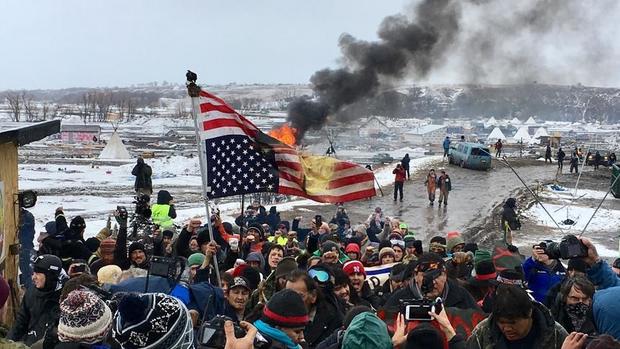Can We Expect Political Extremists to Attack the Fargo-Moorhead Diversion Project Now?

Back during the violent demonstrations against the Dakota Access Pipeline one casus belli of the political extremists perpetrating them was the idea that the pipeline would disturb sacred artifacts and burial grounds along the route.
This was a problematic argument because the DAPL project, through that disputed area near the Standing Rock Indian Reservation, followed an existing industrial corridor. There was an existing gas pipeline, and power line infrastructure, through that area for years before the DAPL project was even planned.
Still, the protesters insisted that their often unlawful antics were justified because of the threat to sacred Native American areas and artifacts.
Now, flash forward to the Fargo-Moorhead flood diversion project. It turns out there are historically significant sites and artifacts in the path of that project too.
Will the extremists who attacked the DAPL project now show up along the path of the diversion project to vandalize construction equipment, harass workers, and instigate conflict with law enforcement?
It doesn’t seem that way. Per Fargo City Commissioner John Strand, it seems the Native American tribes are somewhat more ambivalent about these artifacts:
John Strand, a Fargo city commissioner, briefed the city’s Native American Commission on the two sites. Corps representatives have been invited to present their findings to the Native American Commission in October.
The two sites don’t appear to pose a threat to the $2.2 billion diversion project, Strand said.
“I think the intent is to open the communication clearly, up front,” he added. Although the tribes are concerned, “I didn’t get the impression it was anything like Standing Rock,” a reference to massive protests against the Dakota Access oil pipeline in central North Dakota.
What’s the difference between these projects? In both instances reviews were done of the construction paths to identify and avoid culturally significant areas. In both instances there are/were plans in place to handle any artifacts uncovered during construction. In both instances there was tribal input to help determine the path of construction.
It seems to me the only significant difference is that DAPL was an oil pipeline, and in America there is an extreme political faction which opposes the construction of oil pipelines. Or even the pumping of oil. Their goal is to keep oil in the ground, and they hope to accomplish that goal by inhibiting the construction of infrastructure which serves oil development.
If concerns about desecrating or destroying areas or artifacts sacred to Native Americans were anything other than a mask far-left environmental zealots put on their politics we’d see the same outrage over the diversion project as we saw over DAPL’s construction.




